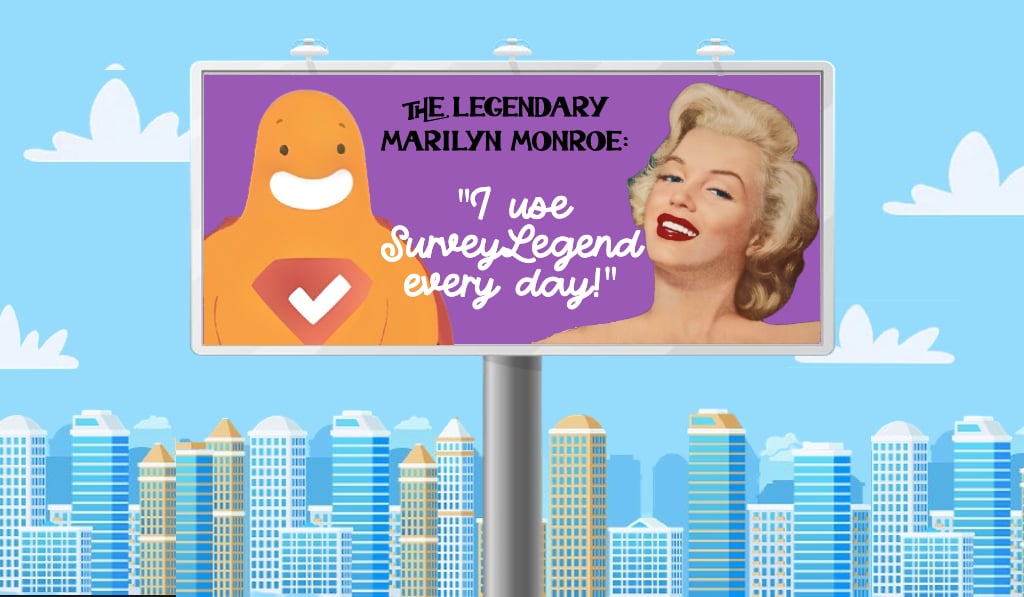We’ve all heard someone describe themselves as “terrible with names.” The same can be true when it comes to naming a product! To arrive at a good product name, a marketer should always conduct a product naming survey to gauge the public’s reaction to a name. These surveys can be given when testing the name of a new product, new line, or new service before release of the product and subsequent product evaluation survey.
Create your FREE Product Naming Survey, Poll, or Questionnaire now!
Why Product Naming Matters
According to the Harvard Business School, more than 30,000 products are launched each year, and 95% of them fail. Some of these may live or die based on their name. So, it’s important to have a good product naming strategy to ensure your product’s profitability, endurance, and ability for future refinement. A few things to consider:
- Keep it simple. A product name should be easy to pronounce (try practicing saying it aloud) and relatively easy to spell. This will help with recall and make a web search much easier for consumers.
- Make it unique. Unless you’re intentionally trying to confuse consumers by mimicking another product (which could result in a lawsuit), make your product name unique. This will help avoid confusion when someone is shopping or doing a web search.
- Allow for expansion. A successful product can lead to another product, but if you box yourself in with a very specific name or use, it can be difficult to expand. For example, Kitchen-Glow cleaner will not translate well if you want to expand into bathroom cleaners.
- Consider international appeal. Many products grow by going overseas, so you don’t want a name that could turn off other cultures. Language is also a consideration. Consider the Chevy Nova when expanding into Mexico, where “No Va” means “Won’t Go,” not exactly a good name for a car.
- Evoke an emotion. Studies show that consumers react more positively to a product name that conveys emotion. While a positive one is a good rule of thumb, there are exceptions: Rovio’s Angry Birds or Fandango’s Rotten Tomatoes are good examples of this!
5 Things to Keep in Mind When Naming Products
First and foremost, it’s important to distinguish between brand and product, as they are sometimes used interchangeably. A brand is a company selling products. While the brand is built over time through awareness and customer experiences, their products can vary considerably. Think of the brand as the umbrella with the products all falling beneath it. Here are some important things to consider about a brand’s products.
1. Brands grow over time, but products can become instant hits.
It typically takes time to grow a brand. When you think of some popular ones (McDonald’s, Apple, Mercedes, Nike, and so on) most took time to cultivate a following, build consumer trust, and find brand advocates. However, products can become instant hits. Consider Apple’s iPhone, or Nike’s Air Jordan. These products took off much faster than the overarching brand did often because product feedback was overwhelmingly positive.
2. Products can die, but brands can survive.
Not all products are timeless. Think about the evolution from 8-track tapes to cassettes tape to CDs. All of these products have mostly come and gone, and a leader in this space was Maxell. Did the brand fold with physical media products went away? Not at all. It transitioned into digital media products and other new lines.
3. Bad products can damage good brands.
Even the best brands can put out duds. Typically, the brand is strong enough to take the hit because they’ve developed consumer trust over a long period of time. But that doesn’t mean they can’t take a big financial loss and have to retreat with their tail between their legs. We’re talking about brand products like Coca-Cola’s New Coke, Colgate’s Lasagna, Sony’s Betamax, McDona’d’s Arch Deluxe, and Nintendo’s Virtual Boy (check out some other big product flops here).
4. Products can be copied, but brands are unique.
When a brand launches a successful new product, it’s only a matter of time before the imitators swoop in. Sometimes they succeed by making a better product or a lower-priced product, sometimes they fail. However, often they manage to coexist because the brands remain unique and people continue to gravitate toward their desired brand: Think of Amazon’s Echo and Google’s Home, or Mars’ M&Ms and Hershey’s Reese’s Pieces.
5. Popular products can become their own brand.
An overwhelmingly popular product can become its own brand. Most people ask for a Kleenex (a Kimberly-Clark product), not a tissue. They use ChapStick (a GSK product), not lip balm. And they play with a Frisbee (a Wham-O product), not a flying disc. How can this be bad? It can result in the loss of their trademark (this happened to escalator, dumpster, zipper, trampoline, and others). While that’s a whole other story, it’s something to keep in mind when naming a product.
Your Product Naming Strategy
Naming a product is different from naming a brand. A brand name may be more vague and meant to speak to tradition, trustworthiness, modernity, or value. A product name often is meant to convey what the product is or what it is intended to do. There are a number of techniques to naming a product. Often, the name is reflective of what the product is intended to do; other times, it’s just a made-up word like Google.
Sometimes, marketers may simply turn to an AI-powered product naming generator, like Namechk.com. Now, that may sound like the wrong way to go about naming a product, but there’s nothing wrong with this! For example, we typed in the words “pizza maker” and got back suggestions like GoPizza, PizzaUp, PizzaPort, and Pizzation. These are all valid names! But, you should never just pick one and run with it. That’s where a product naming survey comes into play.
7 Product Naming Survey Questions
Here are some questions to help get you started when thinking about what types of questions you’ll ask on your product naming survey.
- On a scale of 1-10, how would you rate our product name?
- What do you like the most about our product name?
- When you see our product name, what are the top 3 things that come to mind?
- Does our product name evoke any specific emotions or memories?
- What is something specific you would change about our product name?
- List some adjectives (quality, value, trust, etc) that come to mind when you hear our product name.
- Based on our product name alone, would you try the product?
Creating a Product Naming Survey with SurveyLegend
SurveyLegend allows you to quickly and easily create all types of product naming surveys! Using our previous pizza example, here’s a survey that uses survey skip logic to change questions based on answers. You’ll also notice the beautiful image and a product logo are able to be inserted into the survey.
This survey is live, so give it a try!
Already created a name for your product and now ready to test out some logos? SurveyLegend lets you easily add images to questions to branding surveys!

Conclusion
A good product is a great way to build a brand, and a good product name makes it even easier to do. However, names shouldn’t be selected out of thin air; careful consideration should be given to names that will resonate with consumers. The best way to find out if you’re on the right track with a product name is to conduct a product naming survey. Already have a name and need a product evaluation survey? We’ve got you covered with that too!
How do you typically name your products? Have you used a product naming survey in the past? What insights did the survey provide? Let us know in the comments!
Create your FREE Product Naming Survey, Poll, or Questionnaire now!
Frequently Asked Questions (FAQs)
Companies use product naming surveys to test out the names of new products with certain groups of consumers. If the response is good, they have increased confidence in the new product release. If the response is not good, it may be time to rethink the product name and re-survey participants.
There are always exceptions, but in general a good product name is distinctive and memorable. Short and sweet is always good. And it should evoke emotion and give a consumer a good idea of what it does and how it should be used.
That honor belongs to the Sony PlayStation, with more than 344 million units sold. Note that the product name follows some naming best practices: It’s simple, easy to understand, and conveys what the product is.





